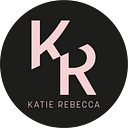Anatomy of a Magazine/the Grid
There are two categories that the elements of a page can be split into, this is the architecture and content. Architecture will remain consistent throughout all issue and includes: grids, margins, standing heads, folios, typographic style sheets. The content changes between each page and with each article.
Editorial design is generally balanced and follows specific rules but can be experimental when necessary. It is a place where viewpoints based on an objective are voiced, they are often about recent events and issues allowing readers to stay up to date on current affairs. For example, relating this to the project, there will be an objective which remains consistent throughout the magazine.
Cover page includes: Masthead, issue and date line, magazine deck (the title, e.g. ‘Fashion & Travel’), lead article line, main image, website link, price, bar code and supporting cover lines. Not all magazine covers include all of these elements, within the project they can be selected according to the creators preference.
Inside a double page spread
Kicker — short text
Headline — the dominant element, display font or custom design to suit the theme of the article
Intro/Stand-first — gives the reader an insight into the article, closing the gap between the headline and body text
Body text — readability and line length
Sub headings — used to divide large amounts of text and hints towards the content of the body text
Pull quote — a piece of information/a quote from the body text
Footer — folio or page number
Byline — author
Captions and credits — adds interest
Grids are important to allow a piece of editorial design to be cohesive and have a clear hierarchy, this helps the reader to navigate their way through a page. A well executed grid will help pages stop looking too alike.
Layouts — arrangement of design elements in relation to the space they occupy
Grids — framework or skeleton that a layout is built on
Format — full area where the elements are arranged
Margin — space between edge of the page and design content
Flow lines — horizontal lines that help the reader to follow the content
Modules — building blocks, a group of horizontal modules is a row, a group of vertical modules is a column
Spatial zones — groups of modules, vertical spatial zones are columns, horizontal spatial zones are rows
Gutters — space between rows and columns. They should remain consistent throughout a publication
Baseline grid — made up of horizontal guides and can be applied to a modular, column or manuscript grid.
A good example of a baseline grid is in lined notebooks. They encourage the size of handwriting to be maintained, going over several lines when bigger type is wanted.
Manuscript grid — the rectangle created in a manuscript grid is the format (the space in which elements can be arranged). This grid is good for block text so is used in books. It can also be used where an image is filling the page.
Column grid — organises elements into columns. Vertical lines and flowlines are followed when placed text and images within the grid. A variety of layouts can be created by spreading content across two or more columns.
Modular grid — consists of both columns and rows and is used when there are too many elements for a column grid. This grid is suitable for experimental editorial design when general rules are broken as the spatial zones can be used in a variety of ways.
Throughout a piece of editorial design there should be consistent familiarity with typography and colour. As the editorial being designed for this project is following one chosen topic, the rule of each individual article having it’s own personality does not apply. However, there should still be a consistent language throughout that has been experimented with to create a playful final outcome. A good piece of advice that Emma Turland (one of my lecturers) said during the presentation was there should be “a simple hook to hang everything on” which I thought was a good way of saying that one simple idea should be conveyed in different ways. Some other hints and tips were that as the 1500 words we are writing will not fill the 12–16 page publication, there will be some pages that contain less or more text, others that are just visual assets or a mixture of both. Pace in a magazine is important to keep the reader engaged.
